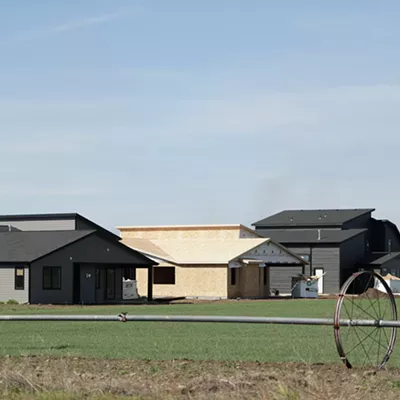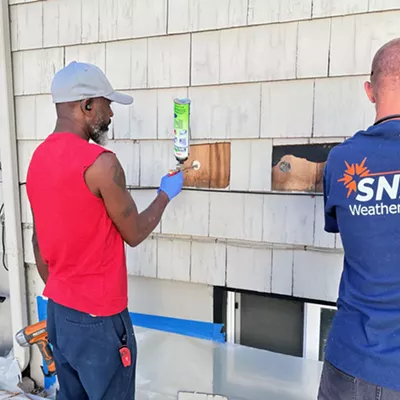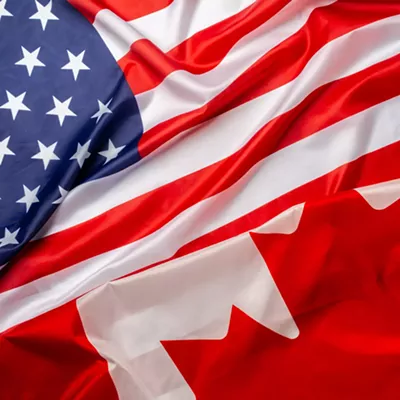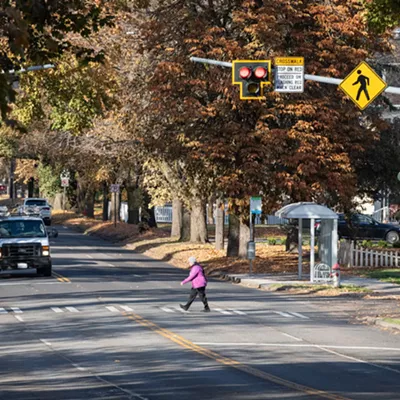Pipe Nightmares
This letter is in response to Bart Haggin's timely guest editorial on petroleum pipeline safety ("Pipeline Priorities," 7/12). Based on my experience, I can say that the managers of the region's water resources are well aware of the risks described by Mr. Haggin. Not one but two liquid petroleum product pipelines cross the Spokane Valley-Rathdrum Prairie Aquifer. Concerns about the Yellowstone and Chevron Pipelines were first brought to the attention of the area's bureaucrats during the development of the Spokane Aquifer Water Quality Management Plan. Between 1977 and 1979, Bart's father and dozens of other concerned citizens and government officials in both Washington and Idaho dedicated themselves to developing management strategies for a multitude of aquifer-quality risks.
Thanks to the efforts of those individuals, both the pipelines and the tank farms they feed came under the scrutiny of local and state agencies. In the last decade considerable effort has been expended to reduce the risk of aquifer contamination from pipeline and tank farm leaks. Not least among the actions taken was the passage of a resolution to require double containment of the large tanks at the pipeline terminals by Spokane County in the fall of 2000. The following are among the safety features employed to protect the aquifer from pipeline leaks: 1) using orange markers along the route so the presence of the pipeline can be identified at any point along its length; 2) double-piping at all road and railroad crossings; 3) periodic inspections for pipeline integrity using video cameras and excavation and repair of questionable sections of pipe; and 4) pipeline section isolation valves at all river crossings.
Of the two pipelines, the Yellowstone affords the greatest risk to the region's water supply. The Chevron pipeline crosses the Spokane River in the Seven Mile area, skirts north of Five Mile Prairie and ends at the North Market tank farm where Bart's father worked. The pipeline itself is north of most public supply wells that serve the Spokane area. The Yellowstone, on the other hand, enters the Spokane Valley-Rathdrum Prairie Aquifer recharge area at Coeur d'Alene and travels essentially down the middle of the Valley to the tank farm at Sharp and Thierman. From there the pipeline continues south across the Valley floor, over Moran Prairie, and on to Moses Lake. The Yellowstone also carries most of the petroleum product brought into Spokane.
It is easy to outline "plans" for protection; actual implementation is another matter. Installation of double containment on all of the Conoco tanks at the Sharp and Thierman tank farm will be complete by the end of summer 2007. Video inspection of the Yellowstone Pipeline conducted within the last decade revealed weakening of a major section of pipe west of Spokane. The degraded section of pipe was removed and replaced.
Nonetheless, risks remain. Local officials are constantly on the watch for buildings encroaching on the pipeline easement. Since the pipeline was originally built, most of the land [that] the Yellowstone Pipeline crosses has been subdivided. The original easements have not always followed the title of the new lots. Many of the pipeline markers have been removed for one reason or another and not replaced. These factors make it difficult for a property owner to know if the pipeline is nearby. Only by using the local Call Before You Dig service can one be sure there is no pipeline.
Much has been done to reduce the danger of pipeline and tank farm leaks. But only constant vigilance on the part of the operators of the facilities, agency personnel and the citizens of Spokane will assure continued success.
Stan Miller
Manager, Spokane County Water Resources Program, retired
Spokane, Wash.
Marmocide
Having recently witnessed the death of a marmot due to the irresponsibility of a pet owner, I find this week's Last Word ("Hoo! Hot! Marmot!' 7/12) advocating violence against marmots to be irresponsible, uncalled for and outright mean-spirited. Here I am trying to get the city to have marmots protected to discourage violence against them, and your paper is letting people know the best places to find them, and encouraging people to shoot and behead them. I think marmots are great. I enjoy feeding them -- as do many others -- so instead of killing these great, friendly creatures, give them some bread and enjoy their company.
Tom Schreck
Spokane, Wash.
The Inlander welcomes letters on all topics, but priority is given to those commenting on subjects raised in our pages. Always include a name and daytime phone number for confirmation. Contact us at totheeditor@inlander.com. The letters we publish represent the views of their writers, not ours.
















